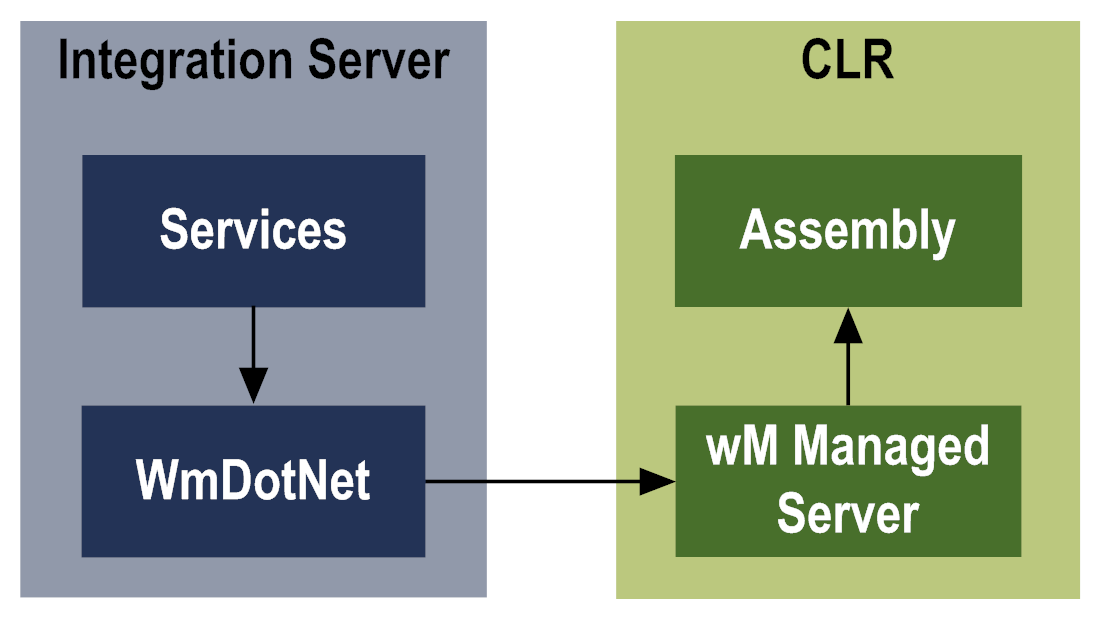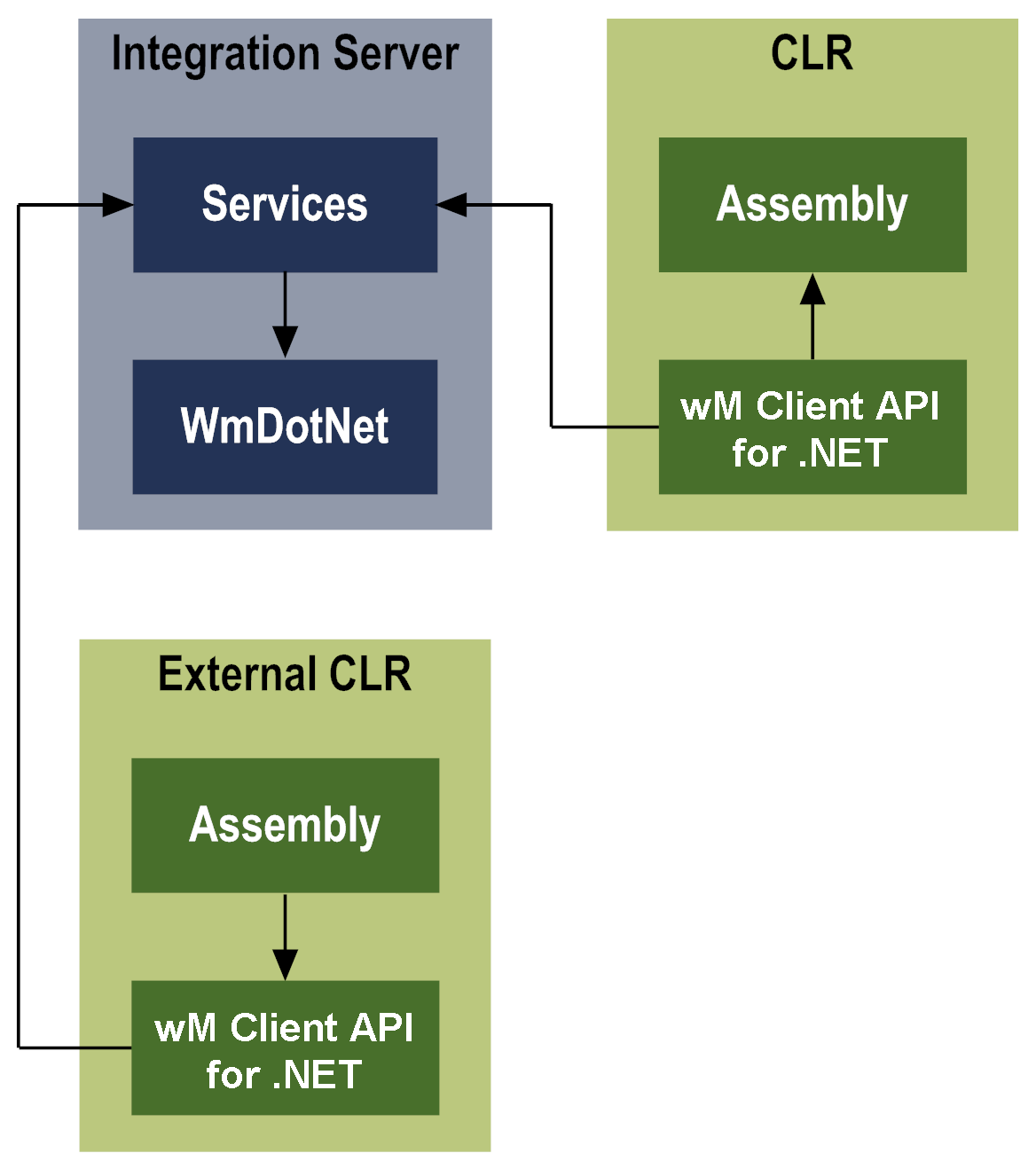Assemblies and their Roles
Components designed to operate within the .NET environment are referred to as assemblies. Assemblies are of two types, DLLs (dynamically-linked library) and executables. The primary difference between DLLs and executables in the .NET environment, and the equivalent components in previous versions of Windows, is that the .NET components require the CLR to execute. Microsoft .NET assemblies, like components of other programming models, generally operate in one of two roles: a service provider or a service consumer.
Service providers provide services to external components using the public methods and properties they expose. Service providers are generally (though not necessarily) DLLs.
Microsoft .NET assemblies operating in a service-provider role
Service consumers consume the services provided by service provider components. Service consumers are generally (though not necessarily) executables.
Microsoft .NET assemblies operating in a client role


